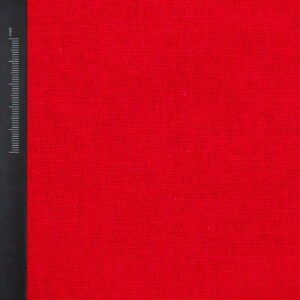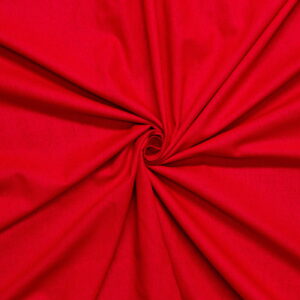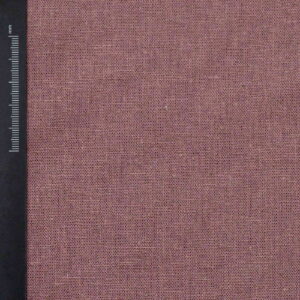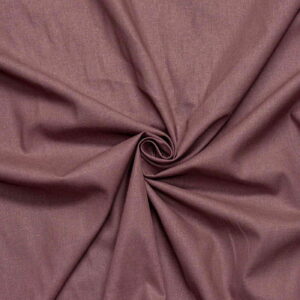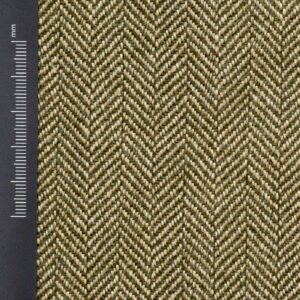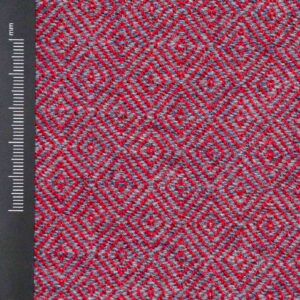A 2/2 twill weave is a specific type of weaving pattern used in textiles. The "2/2" in the term indicates that each weft thread passes over and under two warp threads consecutively before moving on to the next set of two. This creates a diagonal pattern on the fabric, known for its distinctive appearance.
Here are some key characteristics of a 2/2 twill weave:
- Diagonal Pattern: The most noticeable feature is the diagonal line or ribbing on the fabric. This adds a stylish and textured look, making it visually appealing.
- Durability: Twill weaves, in general, are known for their durability. The weaving pattern creates a strong and resilient fabric, suitable for various applications.
- Soft Drape: Despite its durability, a 2/2 twill weave often maintains a soft and pliable feel. This makes it comfortable to wear and suitable for a variety of clothing items.
- Versatility: The diagonal pattern not only adds aesthetic appeal but also makes the fabric versatile. It is commonly used for a range of clothing items, including trousers, jackets, and skirts.
- Textured Surface: The weaving technique results in a textured surface that adds depth and interest to the fabric, making it an excellent choice for both casual and more formal garments.
Merino wool boasts a variety of natural advantages, thanks to its composition involving the preparation of long and soft fleece from Merino sheep. Some notable benefits include:
- Softness and Comfort: Renowned for its gentleness and soft texture, Merino wool makes garments crafted from it exceptionally comfortable on the skin.
- Excellent Thermoregulation: This wool effectively regulates body temperature, providing warmth during chilly days and a cool sensation on warmer ones.
- Breathability: With good ventilation properties, Merino wool is well-suited for extended wear, ensuring comfort and breathability.
- Durability: Recognized for its durability and elasticity, Merino wool ensures that garments made from it stand the test of time, offering longevity and resilience.
WKT fabric, being 100% merino wool and endowed with its unique properties, is an ideal choice wherever warmth, softness, and a delightful tactile experience are desired. The versatility of WKT allows for the creation of various items, including:
- Sweaters and Cardigans: A superb material for crafting sweaters and cardigans, WKT fabric provides both warmth and a soft touch.
- Thermal Underwear: With its excellent thermoregulation capabilities, merino wool in WKT is well-suited for the production of thermal underwear, ensuring comfort in varying temperatures.
- Blankets and Pillows: WKT wool is perfect for crafting warm and snug blankets and pillows, offering a cozy and comforting feel.
- Dresses and Blouses: The fabric lends itself well to the creation of stylish dresses and blouses, seamlessly combining fashion with comfort.
- Gloves and Scarves: Thanks to its delicacy, WKT wool is an excellent choice for gloves and scarves, providing warmth without causing a feeling of overheating.
- Baby Blankets and Clothing: The relatively gentle nature of WKT makes it suitable for crafting baby blankets and clothing, ensuring a pleasant and comfortable experience for little ones.
- Historical clothing: The lightness and softness of WKT wool, combined with the historicity of the weave, make this fabric ideal for sewing historical clothes, especially medieval ones, but also costumes and outfits for LARP.
In summary, WKT proves to be a versatile fabric suitable for a range of applications, catering to both historical reenactment projects and contemporary sewing needs for clothing or home accessories.
Grammage is a measure indicating the mass per unit area of a material, denoted in grams per square meter (g/m²).
For instance, if a fabric has a weight of 150 g/m², it signifies that one square meter of the fabric weighs 150 grams.
This measure holds significance as it enables the assessment of fabric density and weight. Generally, a higher fabric weight corresponds to greater density, thickness and heaviness.
It's crucial to note that diverse fabrics may have varying optimal weights based on their intended use. Fabrics with higher weights often boast increased durability, albeit with potential drawbacks of greater density and reduced breathability. Conversely, fabrics with lower weights tend to be lighter and more breathable but may sacrifice durability.



